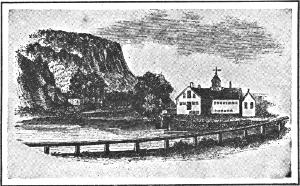The Mentor, No. 29, Great American Inventors
The Mentor
“A Wise and Faithful Guide and Friend”
Vol. 1 No. 29
GREAT AMERICAN INVENTORS
ELI WHITNEY
1765-1825
ROBERT FULTON
1765-1815
ELIAS HOWE
1819-1867
S. F. B. MORSE
1791-1872
ALEX. GRAHAM BELL
1847-
THOMAS ALVA EDISON
1847-

By H. ADDINGTON BRUCE
Anyone who reads the history of the United States must beimpressed with the supremely important part played by theinventor in the evolution of the nation. The explorer andpioneer, the statesman, diplomat, and soldier,—all these have contributed,and contributed notably, to the upbuilding of the mighty republicof today. But it is beyond dispute that in the long run their effortswould have counted for comparatively little had it not been for the geniusof those who have bent their energies to the devising of means for thedevelopment of the country’s marvelously rich resources, and havestill further added to the national wealth by the creation of unsuspectedchannels for the profitable employment of human enterprise and labor.

WHITNEY’S ARMORY
In 1798 the inventor of the cotton gin began the manufactureof firearms near New Haven, Connecticut.
It was in the humble workshops of men like Whitney, Fitch, andFulton that, almost as soon as the independence of the United States hadbeen won by the sword, the foundations were laid for its rise to thestanding of a world power. Every invention these men made meanta gain in the nation’s strength, anda wider opening of the door of opportunityto all native-born Americans,and to the constantly increasing hostof newcomers from abroad. TheAmerican inventors have not simplyastonished mankind; they have enhancedthe prestige, power, and prosperityof their country.
THE COTTON GIN

BIRTHPLACE OF WHITNEY
In this house in Westborough, Massachusetts,Eli Whitney was born on December 8, 1765.
Take, for example, the resultsthat have flowed from a single invention,that of the Whitney cotton gin. When the young Yankee schoolmasterand law student, Eli Whitney, was graduated from Yale andsettled in Georgia in 1792, the production of cotton in the SouthernStates was insignificant. At that time, indeed, cotton was grown by theSoutherners chiefly for decorative effect in gardens, because of its handsomeflowers. Its cultivation for commercial purposes was virtually out ofthe question, owing to the fact that no means were available for economicallyseparating the lint from the seed. This had to be done by hand,and since it took ten hours for a quick worker to separate one pound oflint from its